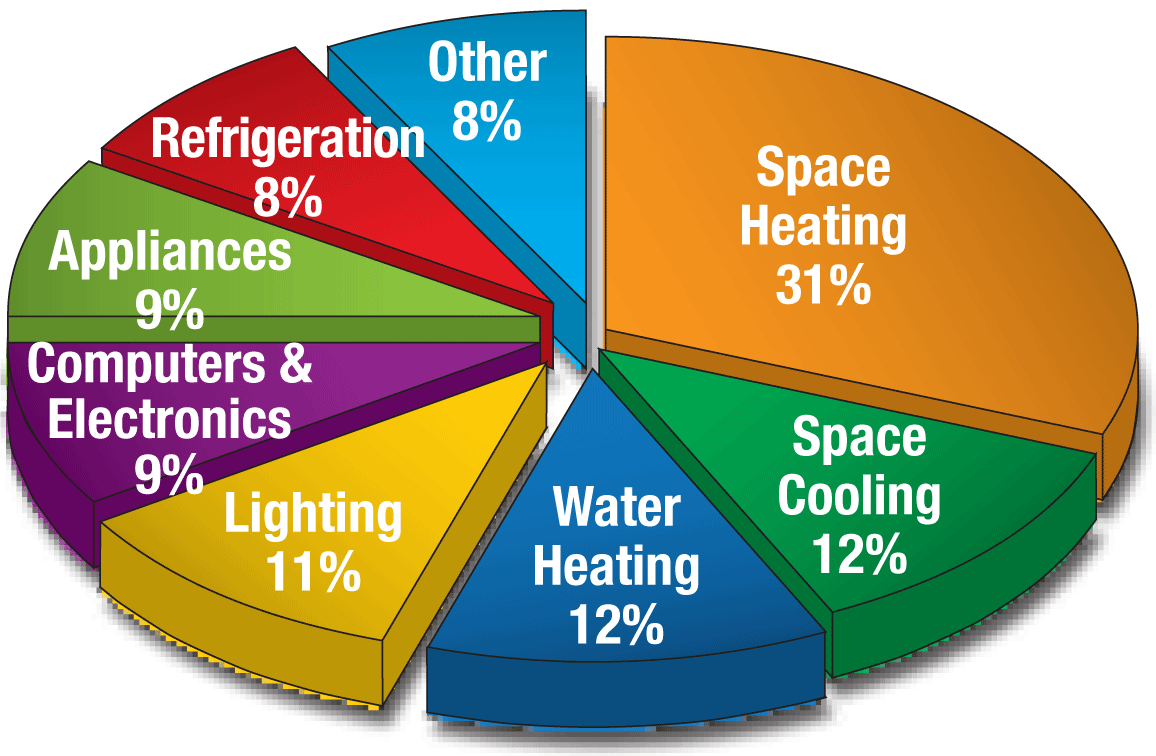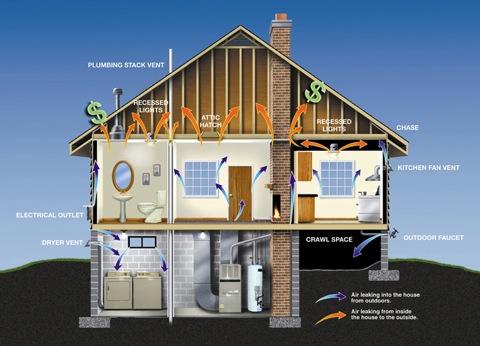The only environmentally-friendly form of energy is….
Energy we DON’T USE..!
OA-cities could reduce domestic power usage by up to 80%..!


HEATING & COOLING – estimated 80% saving
-
- Pyramids eliminate the main source of heat leakage..! The ROOF..!
- Apartments instead of houses – smaller spaces to heat/cool
- Exterior-facing ONLY ONE EXTERIOR WALL
- Interior-facing NO EXTERIOR WALLS at all..!
- Enclosable Patios create an insulating ‘airlock’ space.
- PV solar-integrated patio windows/shutters
- Natural air-flow passive heating/cooling system
- Waste Heat Recovery – District Heating
WATER HEATING – estimated 80% saving
Water heating is the 2nd biggest domestic consumer of energy (whether electric or gas)
Traditional ‘heat and store’ systems waste energy due to constant heat leakage from the storage tank, prompting the thermostat to continually kick-in to boost the temp back up to 55degC, the usual factory setting. Long pipe runs, especially in older buildings, is a great energy waster. Having opened the hot tap, we expect to get almost instant hot water but, with a long pipe run from the storage tank, we might get only cold water for 15/20 seconds or longer and then we close the tap just before the hot water arrives. Whenever this happens litres of expensively-heated hot water remain in the pipes.
Instant hot water heaters – eg. electric showers – negate these drawbacks but use a lot of energy (> 8 kw/hr) and often cannot supply enough water for a good strong shower.
Discounted ‘Off-peak’ electricity provides financial savings for the consumer but it is a horribly inefficient and unsatisfactory system. Firstly, in order to ensure sufficient water to last throughout the day, the storage tank needs to be larger – thus consuming more (if cheaper) power and more heat leakage. As the day goes on, the heat gradually seeps away until, after drawing off some hot water, the tank is topped-up with cold. (Perhaps some systems are more sophisticated, but this has been my experience). About halfway through the day the water is no longer hot enough to wash the dishes.
Direct solar-hot water systems work best in warm climates, where they are less needed..! If the sun doesn’t shine one day, the water may only be lukewarm for your morning shower – before the sun has had a chance to do its work. They also require a large storage tank as well as the roof space for the panels, etc.
LIGHTING – estimated 50% saving
Smaller homes, fewer rooms, fewer lights – auto on/off sensors
REFRIGERATION – estimated 70% saving
Refrigerators can be a big power waster – especially if older or boxed-in, thus trapping waste heat.
BIG FRIDGES cause FOOD WASTE – with large double-door fridges, or chest freezers, a lot of food tends to get hidden at the back or in the bottom where it gets forgotten about and is then thrown out having gone past its use-by date.
OA-CITY SOLUTIONS
FRIDGES – If a block of apartments shared a compressor engine, this would be far more energy-efficient than dozens of small individual engines. Fridges work by extracting heat and cockroaches thrive in the warm dark unventilated spaces behind them.
Alternatively, building-integrated fridges would be much better insulated than free-standing fridges, and their waste-heat could be efficiently extracted for re-use. Sadly, countless millions of cockroaches would become homeless, but….
BIG DOUBLE-DOOR FRIDGES and FREEZERS are wasteful of space, energy and food, as much of what goes into them is forgotten about and eventually thrown away. With shops being so close they would be un-necessary.
CONVECTION OVENS and HOT-PLATES replaced by less energy-wasteful cooking methods.
WHY COOK anyway when you could eat in an inexpensive canteen/buffet just a short walk away..?
HOT WATER – instant heating would save the heat-loss due to cooling in storage tanks and long pipe-runs.
PASSIVE HEATING & COOLING – “zero-house” super-insulation with passive heating and cooling technology.
AUTO POWER-OFF SWITCHES – as used in hotels
VARIABLE ELECTRICITY RATES – smart meters could alert consumers when rates are high or low
COMPACTNESS – space-saving techniques as employed in aircraft, yachts, and micro apartments.
ELEVATOR BEDS – Big luxurious beds occupy a lot of space and would completely dominate a small studio apartment. Elevator beds would save a lot of space in small apartments, but being custom-made they are expensive. Mass-produced for OA-cities they could be affordable.

